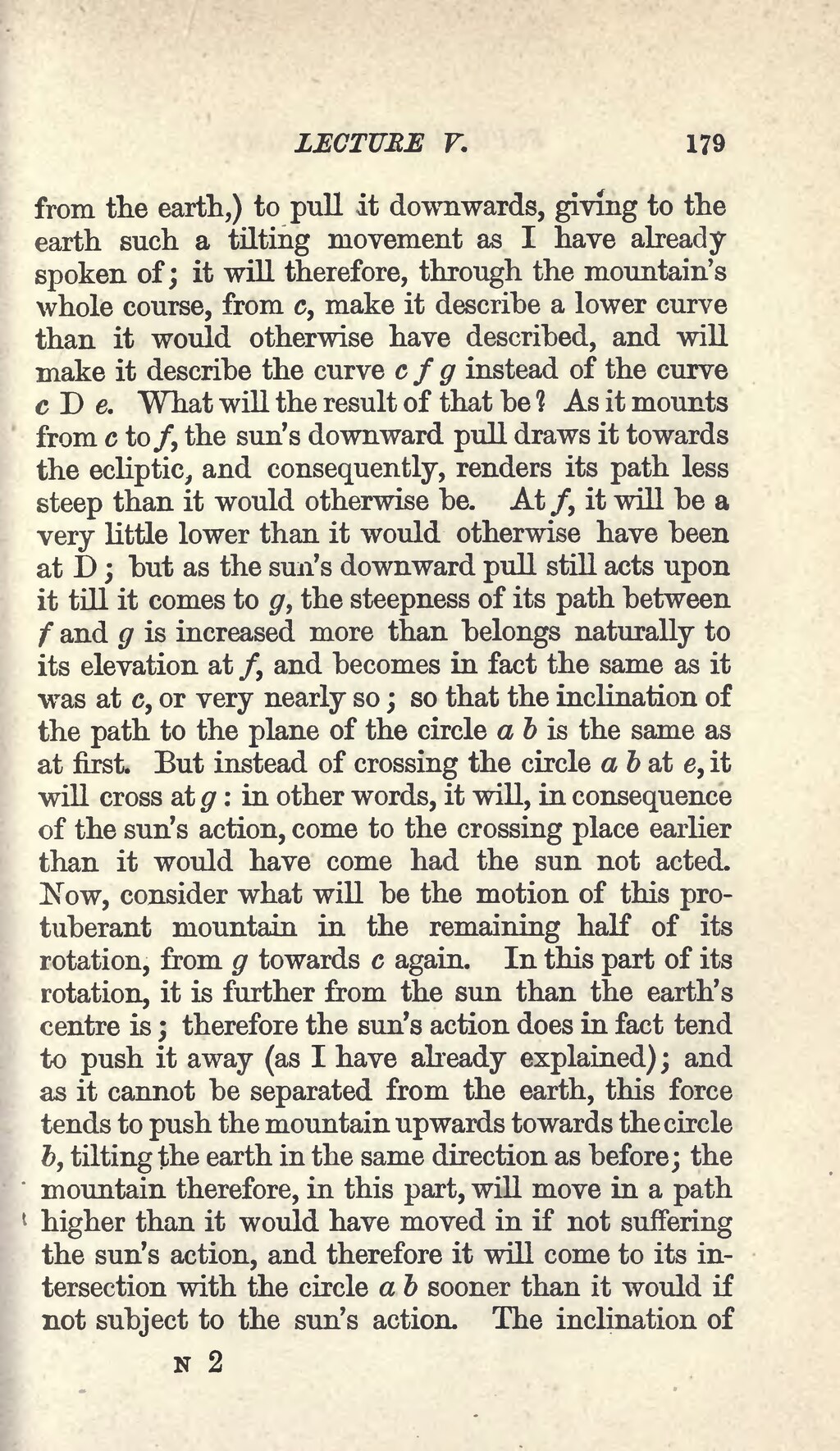from the earth,) to pull it downwards, giving to the earth such a tilting movement as I have already spoken of; it will therefore, through the mountain's whole course, from c, make it describe a lower curve than it would otherwise have described, and will make it describe the curve c f g instead of the curve c D e. What will the result of that be? As it mounts from c to f, the sun's downward pull draws it towards the ecliptic., and consequently, renders its path less steep than it would otherwise be. At f, it will be a very little lower than it would otherwise have been at D; but as the sun's downward pull still acts upon it till it comes to g, the steepness of its path between f and g is increased more than belongs naturally to its elevation at f, and becomes in fact the same as it was at c, or very nearly so; so that the inclination of the path to the plane of the circle a b is the same as at first. But instead of crossing the circle a b at e, it will cross at g: in other words, it will, in consequence of the sun's action, come to the crossing place earlier than it would have come had the sun not acted. Now, consider what will be the motion of this protuberant mountain in the remaining half of its rotation, from g towards c again. In this part of its rotation, it is further from the sun than the earth's centre is; therefore the sun's action does in fact tend to push it away (as I have already explained); and as it cannot be separated from the earth, this force tends to push the mountain upwards towards the circle b, tilting the earth in the same direction as before; the mountain therefore, in this part, will move in a path higher than it would have moved in if not suffering the sun's action, and therefore it will come to its intersection with the circle a b sooner than it would if not subject to the sun's action. The inclination of
